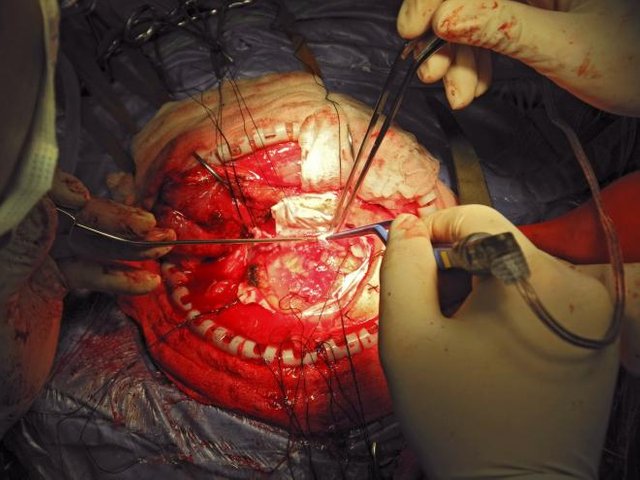From Liver Transplants To Brain Surgeries, These Are The 5 Highest Risk Operations

In general, any procedures that are considered “invasive” can be risky. This could involve anything that involves a skin incision, anesthesia, biopsies, or endoscopies (such as colonoscopies or bronchoscopies), among other things. Complications during surgery can arise from anesthesia problems; for example, a patient might have an adverse reaction to the drug that knocks them out. Anesthesia also often involves intubation, or inserting a breathing tube, which could potentially lead to aspiration (inhaling food or fluid into the lungs). Sometimes, anesthesia can lead to malignant hyperthermia, or the extreme rising of the body temperature.
Other problems can be caused by bleeding problems, blood clots, or delayed healing. Of course, these complications are rare and shouldn’t prevent you from undergoing surgery, but they are all things of which surgeons have to be aware. Below are the five riskiest surgeries.
OPEN HEART SURGERY
Open heart surgery involves any procedure that cuts open the chest and surgeons work on the heart muscles, arteries, or valves. The most common type of open heart surgery is coronary artery bypass grafting (CABG), which involves grafting or attaching a healthy artery or vein to a blocked coronary artery — essentially “bypassing” the blocked artery and providing blood to the heart. The surgeons provide the patient with general anesthesia, cuts an eight to 10-inch gap in the chest, then cuts through the patient’s breastbone.
This leaves the patient open to risks such as a chest wound infection — which is especially dangerous and likely for people with obesity or diabetes. The patient might also experience a heart attack or stroke, an irregular heartbeat, lung or kidney failure, chest pain, fever, memory loss, blood clots or blood loss, and breathing difficulties.
LIVER TRANSPLANTS
The liver is an extremely valuable and significant organ; we rely on it to keep us functioning on a daily basis. It detoxifies the body and also transforms food into energy. Though liver transplants are relatively common procedures, they still remain very risky: the chance that the body will reject the new organ is quite high, so liver transplant patients often have to take medication that maintains their immune system for the rest of their lives, in order to keep organ transplant rejection at bay. Other complications include: bleeding, infection, blockage of blood vessels to the new liver, leaking of bile or blocked bile ducks, and initial lack of new liver function, according to Johns Hopkins School of Medicine.
INTESTINE TRANSPLANT
If your intestine stops absorbing nutrients, electrolytes, and fluids, you have intestinal failure. Though patients with intestinal failure can be fed through total parenteral nutrition, which involves dripping a fluid through a needle or catheter into your vein, this can often cause life-threatening problems like liver disease, catheter infections, and even bone disease. So many doctors turn to a complete intestine transplant in order to avoid any adverse side effects of the feeding process. There are only a few medical centers in the entire world that complete intestine transplants, due to its extreme complexity and need for an expert hand. As with any other transplants, there’s always the risk that the transplanted organ will be rejected by the body, causing infection.
CANCER OPERATIONS
Cancer surgery involves any procedure that removes tumors from various parts of the body, in the hopes of demolishing any bit of cancer from the patient. Cancer surgery might involve the removal of breasts from breast cancer (mastectomy), or the removal of lungs from lung cancer (lobectomy and pneumonectomy). As with these other risky surgeries, the danger of any organ removals could lie in pain, infection, loss of organ function, bleeding, blood clots — and of course the return of cancer itself.
BRAIN SURGERY
Without a doubt, any type of brain surgery is probably the most dangerous. A craniotomy is the most common type of surgery to remove a brain tumor, in which the surgeon cuts out a part of the skull to get to the brain. Often, it’s not entirely possible for the surgeons to remove all of the tumor, so they remove as much as they can — called debulking. Craniotomies and other brain procedures can result in infection, hemorrhage or bleeding in the brain, blood clots, brain swelling, seizures, and even pneumonia. Some patients can also develop stroke due to low blood pressure, but these risks are quite rare. To be prepared for these types of surgeries or any surgeries — talk to your doctor about risks and the best way to ensure a smooth operation (your physician will most likely tell you that the chances of developing any adverse complications is quite rare).
Good article. As you say any invasive procedure is dangerous to some degree.